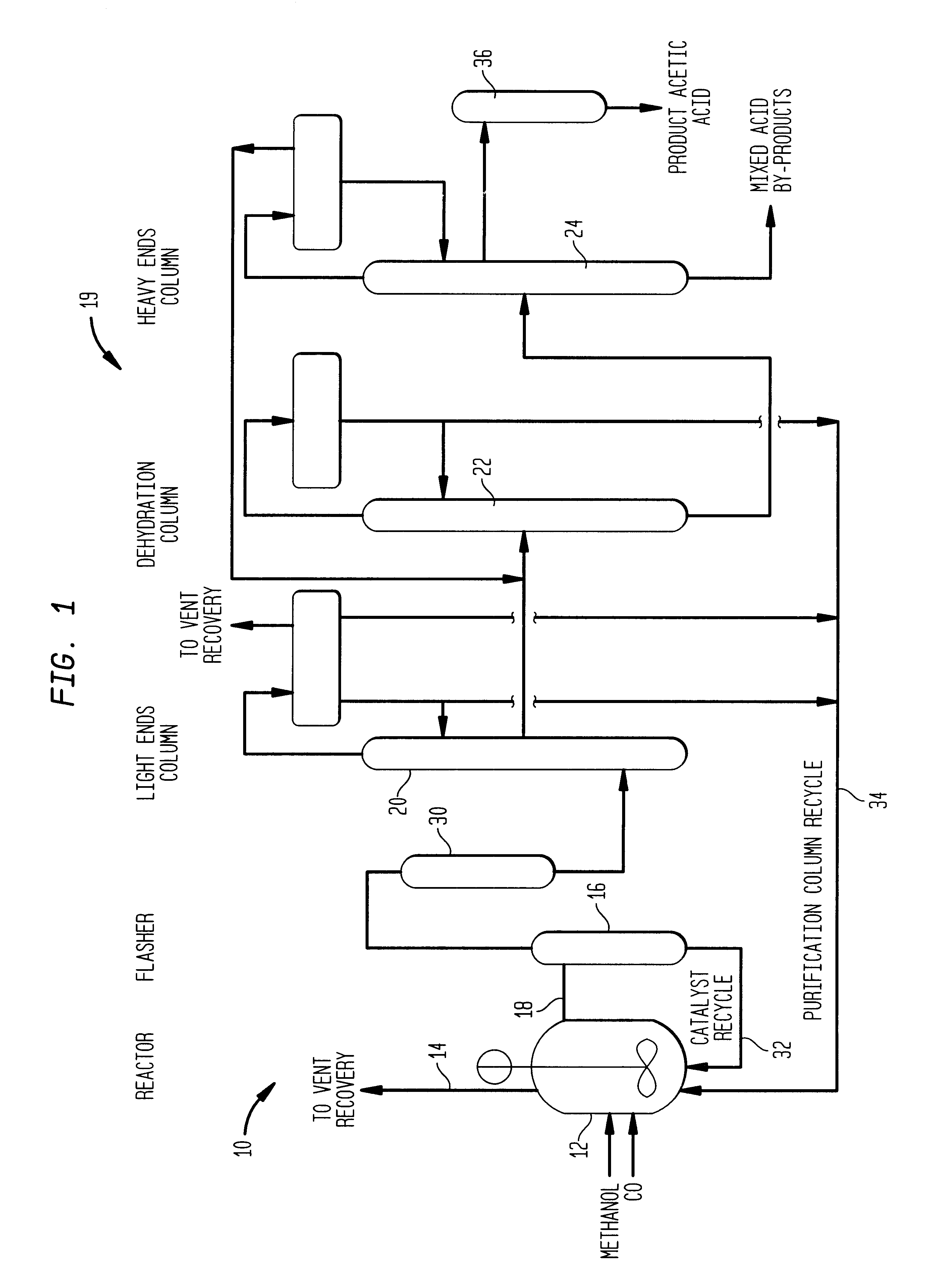Method and apparatus for sequesting entrained and volatile catalyst species in a carbonylation process
- Summary
- Abstract
- Description
- Claims
- Application Information
AI Technical Summary
Benefits of technology
Problems solved by technology
Method used
Image
Examples
example 1
The above procedure was followed wherein 1.3 g of 25% crosslinked poly(4-vinylpyridine) ("PVP-I") (Aldrich, Reilly), about 1%, was added. The carbonylation rate was measured approximately as 43 STY on the same basis as Comparative Example A. After completion of the run, the polymer was digested and analyzed for iridium metal in order to determine the amount of Iridium charged which had been anchored to the polymer. Results for this Example also appear in Table I, along with the results of Examples 2-8.
examples 2-8
Following the procedure of Example 1, a series of runs were carried out with different amounts of poly(vinyl pyridine). Polyvinylpyridine was supplied by either Aldrich or Reilly Industries (Indianapolis. Ind.). Reactor compositions and results as to anchored iridium appear in Table I.
As can be seen, best results in terms of sequestering the catalyst are obtained when the ratio of resin to Group VIII metal catalyst is relatively high as is the case in a fixed bed disposed in a product stream in accordance with the invention.
examples 9-14
Following generally the procedure set forth above, crosslinked polyvinyl pyrrolidone resin was charged to an autoclave along with the various components listed in Table II below.
PUM
| Property | Measurement | Unit |
|---|---|---|
| Fraction | aaaaa | aaaaa |
| Fraction | aaaaa | aaaaa |
| Fraction | aaaaa | aaaaa |
Abstract
Description
Claims
Application Information
 Login to View More
Login to View More - R&D
- Intellectual Property
- Life Sciences
- Materials
- Tech Scout
- Unparalleled Data Quality
- Higher Quality Content
- 60% Fewer Hallucinations
Browse by: Latest US Patents, China's latest patents, Technical Efficacy Thesaurus, Application Domain, Technology Topic, Popular Technical Reports.
© 2025 PatSnap. All rights reserved.Legal|Privacy policy|Modern Slavery Act Transparency Statement|Sitemap|About US| Contact US: help@patsnap.com

